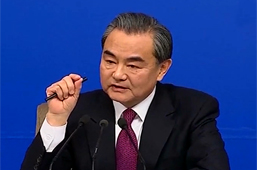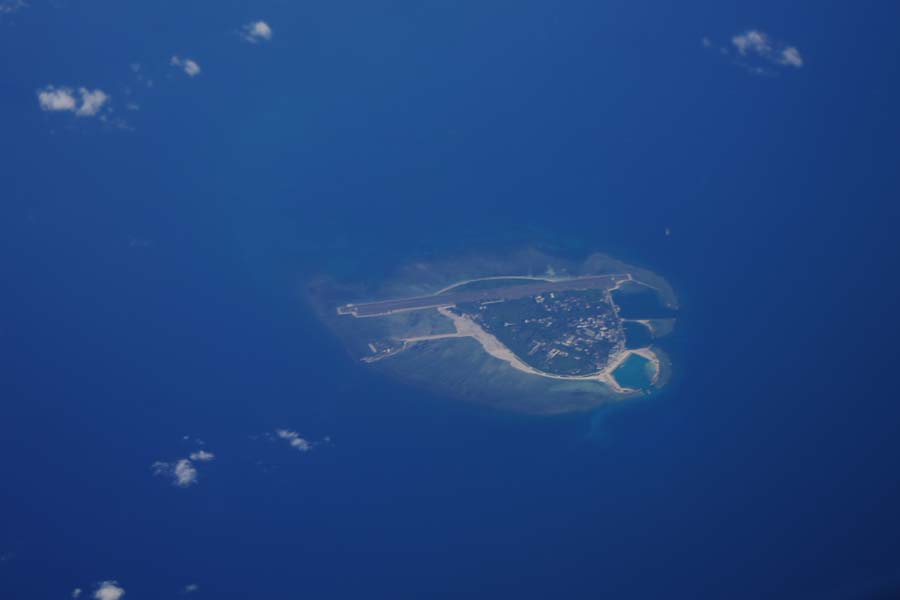1. Administrative Management and Patrolling
1) The Establishment and Improvement of the Administrative Authority
After the Revolution of 1911, Xisha Qundao was placed by the Guangdong Provincial Government under the jurisdiction of Yaxian County (now Sanya City) of Hainan. In March 1921, they were officially placed under the jurisdiction of Guangdong Province by the military government of Guangzhou for strengthened control.
In July 1925, during preparations for establishing observatories in Dongsha and Xisha Qundao, the Naval Coastal Patrol Department under leadership of the central government in Beijing found that some Japanese had occupied Dongsha Island and Yongxing Dao of Xisha Qundao for illegal fishing activities, exploitation of seafood, guano and other resources. It proposed promulgation of Measures for Managing Foreign Nationals at Dongsha and Xisha Qundao in accordance with international conventions.
After the victory of the War of Resistance against Japanese Aggression, the Government of the Republic of China set up a "Special Administrative Region" in Hainan Island, and established an Administrative Region Office. Directly under the leadership of the Executive Yuan, it was charged with management of Hainan Island, Dongsha, Xisha, Zhongsha and Nansha Qundao.
In December 1946, the National Government took over Nanhai Zhudao. By order from the Executive Yuan, Dongsha, Xisha, Zhongsha and Nansha Qundao were placed under the jurisdiction of the Guangdong Provincial Government. At the same time, considering that only naval defense was exercised for Nanhai Zhudao despite their significance as a strategic defense area, the Ministry of the Interior submitted on February 18, 1947 a proposal to the Executive Yuan, suggesting placing Hainan Island under the management of the Navy temporarily before the Special Administrative Region was established, via registration with the National Government.
On March 27, 1947, the Executive Yuan issued an order, entrusting the management of Nanhai Zhudao temporarily with the navy. In the same year, the Navy headquarters set up administrative offices in Dongsha, Xisha and Nansha Qundao, for implementation of military affairs and governance.
In order to fulfill their duties, the administrative offices actively sent envoys to patrol the islands. On January 15, 1947, the Navy Command telegraphed Li Bizhen, the then director of the Xisha Meteorological Station, to dispatch personnel to the islands to the southeast of Yongxing Dao for reconnaissance and to report the situations to the Navy headquarters. Regarding Nansha Qundao, Deng Qinghai, the then director of Nansha Meteorological Station landed on and inspected Nanzi Dao on February 12, 1947, inscribed a wooden pillar and erected it on the island. Later, the details of the inspection were reported to the Navy headquarters.
On March 2, 1947, the six soldiers dispatched by Deng Qinghai to inspect the Beizi Dao found in searching the island the wreckage of a US aircraft shot down, and erected a sovereign monument on the island.
In early July 1947, Organization Law for the Administrative Office of Hainan Special Administrative Region was formally adopted at the Executive Council of the National Government. On January 21, 1949, Hainan Special Administrative Region was established. Directly under the jurisdiction of the Executive Yuan, it "covers a total of 77,970 square kilometers, including the islands to its southwest." On June 6, the National Government officially promulgated the Regulations for Organizing the Hainan Special Administration Region and the Regulations for Organizing the Preparatory Committee for Hainan Special Administration Region. It was regulated in the first regulation that "Hainan Special Administrative Region shall include Hainan Island, Dongsha Qundao, Xisha Qundao, Zhongsha Qundao, Nansha Qundao and other affiliated islands." By then, Nanhai Zhudao was officially transferred to the jurisdiction of Hainan Special Administrative Region, and a complete administrative system was established for them.
2) Unification and Standardization of the Names of Islands in Nanhai Zhudao and Their Use in Maps
In the early years of the Republic of China, Nanhai Zhudao were named, but were without officially unified names. In order to eliminate the confusion and irregularity concerning the names and their use in maps, the Government of the Republic of China proceeded to unify their names and standardize map publishing.
On December 21, 1934, the Chinese and English names of islands in the South China Sea were adopted at the 25th meeting of National Cartographic Review Committee and published in the first issue of its journal in January 1935 under the title of Chinese-English Names of Islands in the South China Sea. Among the total of 136 islands (including four archipelagos) and reefs involved, 28 were distributed in Xisha Qundao and 96 in Tuansha Qundao (now the Nansha Qundao). This is the first time for the Chinese government to release all the names of Nanhai Zhudao, and the first time for it to officially divide Nanhai Zhudao into Dongsha Island, Xisha Qundao, Nansha Qundao and Tuansha Qundao.
In negotiating with the French government about the "nine-isle incident", the Chinese government found that the use of relevant maps was not standardized. So it strengthened map review and requested the entire country to adopt the map approved by competent ministries.
On August 8, 1947, the Department of Territorial Affairs under the Ministry of Interior prepared one location map of Nanhai Zhudao, one map of Xisha Qundao, one map of Zhongsha Qundao, one map of Tuansha Qundao, the map of Taiping Dao, the map of Yongxing Dao and the map of Shidao Dao, as well as a list of ancient-present names for Nanhai Zhudao. The maps of Taiping Dao, Yongxing Dao and Shidao Dao were prepared on the basis of field surveys undertaken by personnel from the Ministry of the Interior, with approval from the national government and proper registration formalities.
Since then, it was regulated that the location map of Nanhai Zhudao and the list of their old and new names should be published by the Department of Territorial Affairs under the Ministry of Interior and printed by the Surveying Bureau under Ministry of Defense. On December 1, 1947, the Ministry of the Interior officially approved the names of Islands and reefs in Dongsha Qundao, Xisha Qundao, Zhongsha Qundao and Nansha Qundao that constituted Chinese territory. This time, "Nanhai Ge Daoyu" (Islands in the South China Sea) was changed to "Nanhai Zhudao" and one of the two "Dongsha Islands" to "Dongsha Qundao." In addition, to ensure match between name and location, "Tuansha Qundao" was renamed "Nansha Qundao", while the original "Nansha Qundao" was renamed "Zhongsha Qundao", making the relationship and hierarchy between the Islands better coordinated. The Chinese government re-approved the names of 172 Islands in Nanhai Zhudao (including 12 archipelagos), and annotated the meaning of some of them.







 Overview
Overview Resources & Environment
Resources & Environment



 QQ 好友
QQ 好友 微信好友
微信好友 易信好友
易信好友 QQ空间
QQ空间 朋友圈
朋友圈 百度空间
百度空间